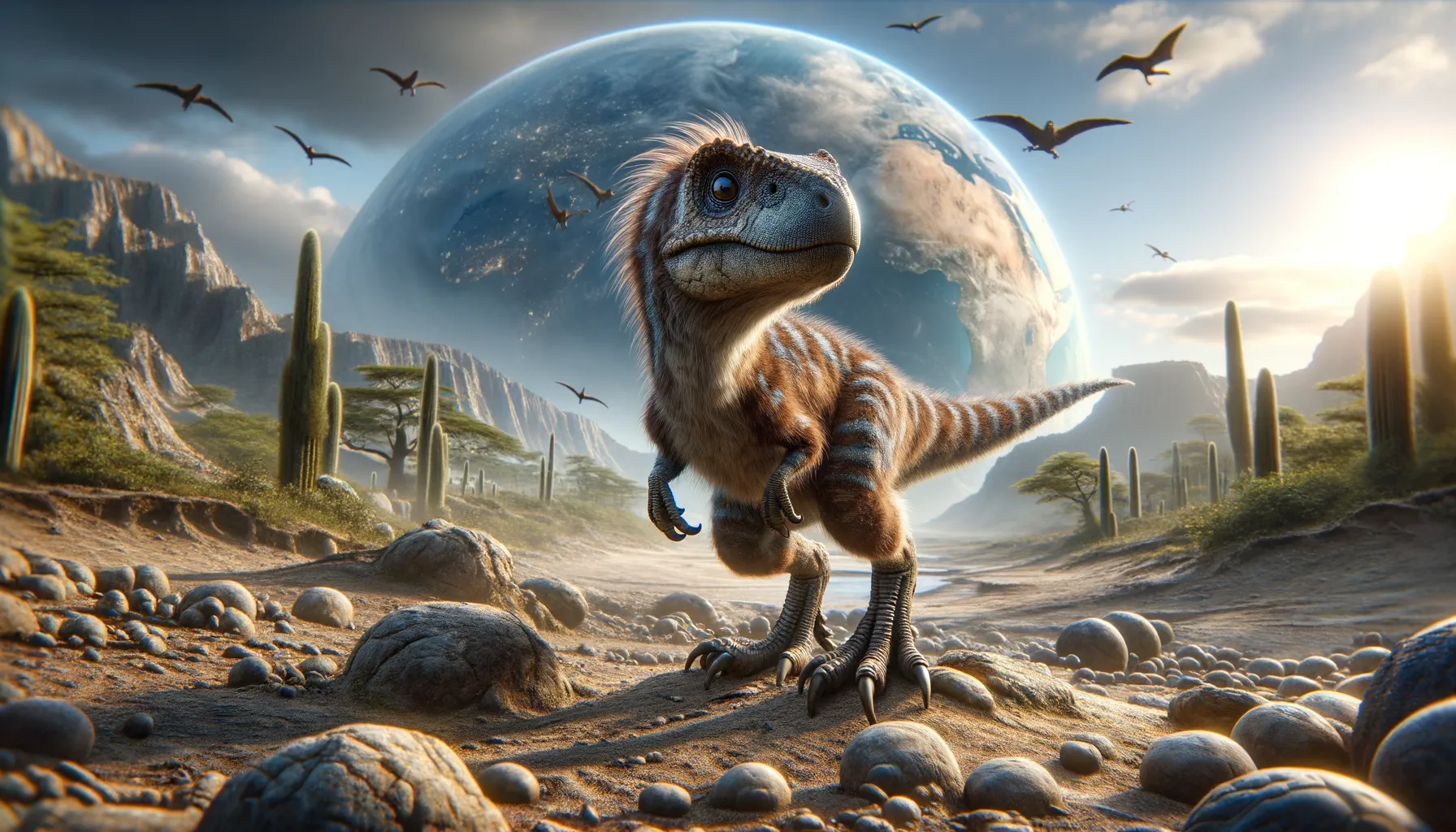
Saltopus
A glimpse into the dawn of dinosaurs.
Period
Triassic
Length
Roughly 1 meter in total length.
Height
Around 30 centimeters at the hip.
Weight
Approximately 1 kilogram.
Saltopus was a small dinosaur that lived in what is now Europe during the late Triassic period. Weighing about 1 kilogram, it was lightweight and nimble, factors that potentially contributed to its predatory lifestyle. Despite limited fossil evidence, Saltopus is speculated to share characteristics with the earliest dinosaurs. Its skeletal framework suggests that it might have been a close relative of the ancestors of true dinosaurs, showcasing some of the evolutionary traits that would later define the Dinosauria.
Diet
Saltopus was likely a carnivore, which means it probably fed on small animals, insects, and possibly carrion. Its diet would have consisted of whatever was available and easy to catch in its environment.
Hunting
With its small and agile body, Saltopus was probably an opportunistic hunter, using speed and agility to catch its prey. It may have relied on stealth, seizing food whenever the opportunity arose.
Environmental challenges
During the late Triassic, Saltopus would have faced a landscape of rapidly evolving flora and fauna, with competitors and predators increasing in diversity. Adapting to these changes required agility and intelligence to shift hunting strategies and avoid becoming prey. Climate fluctuations could have also influenced its survival, necessitating resilience and adaptability.
Speed
Likely agile due to its lightweight build.
Lifespan
Estimated around 10 to 20 years.
First discovery
Discovered in 1910 in Scotland.
Fun Facts
- Saltopus was a small dinosaur that lived around 228 million years ago during the late Triassic period.
- Despite its name, Saltopus was not actually a true dinosaur but rather a dinosaur-like reptile, closely related to the early dinosaurs.
- Saltopus was very lightweight and fast, with long legs suggesting it was a quick runner.
- This creature was very small, roughly the size of a modern-day cat, measuring about 60 centimeters (2 feet) in length.
- Saltopus's fossils were first discovered in Scotland, making it a rare example of a dinosaur-like creature from the region.
- Only one incomplete specimen of Saltopus has been found, which makes it a bit of a mystery in paleontology.
- The name 'Saltopus' means 'hopping foot', which highlights its ability to move quickly, possibly by hopping or sprinting.
Growth and Development
Saltopus likely grew at a moderate rate, reaching adult size within a few years. As a small dinosaur, it would not have lived as long as some of its larger contemporaries. Juveniles may have been more vulnerable to predation, requiring them to mature quickly.
Habitat
Saltopus inhabited a variety of environments, primarily in what are now European regions, characterized by forests and coastal areas. These diverse habitats provided ample resources to support its dietary needs. The varied landscapes also offered plenty of opportunities for shelter and camouflage.
Interaction with other species
Given its size, Saltopus had to navigate interactions with many predators, likely using its speed to escape threats. It might have competed with similar-sized carnivores for food, and its presence in mixed-species environments suggests some level of coexistence with herbivorous species seeking the same spaces for different resources.
Natural lifespan
Saltopus likely lived up to 20 years in the wild.
Reproduction
Saltopus may have laid eggs like other reptiles, possibly in sandy or earthy nests. Parental care is uncertain, but it may have left the young to fend for themselves after hatching. Reproduction would have involved seasonal matings to coincide with favorable conditions.
Social behaviour
Saltopus may have lived in small groups or been a solitary creature. Its behavior could have included social interactions during breeding seasons. Instinctive territorial behavior is likely, with individuals establishing dominance through displays or confrontations.
Fossil locations
Fossil evidence of Saltopus has been primarily found in Scotland, and its remains are scarce. Only a few specimens have been recovered, complicating efforts to fully understand its lifestyle and biological characteristics. These limited fossils provide insight into the early evolution of dinosaurs.
